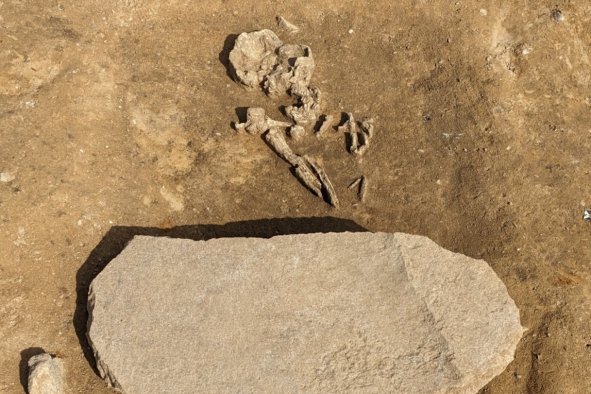Archaeologists have recently uncovered an 1,800-year-old sculpture depicting an ancient hybrid deity at the site of a Roman fort in Germany.
The sandstone artifact came to light during excavations in the Bad Cannstatt borough of Stuttgart, the capital and largest city of the German state of Baden-Württemberg.
In Roman times, the excavation site was home to a fort from around A.D. 100-150 where a military cavalry unit was based. An extensive civilian settlement subsequently developed in the 2nd and 3rd centuries.
"This settlement took on a city-like character and was the central transportation hub of Roman southwest Germany until the end of Roman rule around A.D. 260," Dr. Andreas Thiel, an archaeologist with the Baden-Württemberg State Office for Monument Preservation (LAD) who is leading the ongoing excavations, told Newsweek.
During the excavations, a mud-smeared sandstone object emerged that turned out to be a kneeling figure with a human head, measuring around 12 inches tall, the Stuttgart Regional Council announced.
Despite the stone being heavily weathered, the figure's arms are visible on the sides of the upper body, with its hands resting on the hips and legs that appear to merge into the form of a snake.
"Due to the weathering and the poor quality of the stone, the snakes on our piece are unfortunately very difficult to see," Thiel said. "This was of course easier to recognize in ancient times due to the colorful painting."
According to Thiel, the artifact, which likely dates to the latter half of the 2nd century A.D., appears to depict a hybrid of Roman and Germanic gods.
"The figure is a hybrid creature of the Roman-Germanic world of gods," Thiel said in a press release. "Every archaeologist is happy when a beautiful find is made."
This figure once formed part of a type of monument known as a Jupiter Column that was widespread in Roman Germania. These columns tended to be crowned with a statue of the Roman deity, king of the gods, among other characteristic features.
"These monuments combine classical antiquity with probably Germanic beliefs," Thiel said in the press release.
According to archaeologists, the newly uncovered sandstone figure could be linked to another part of a Jupiter Column found in the area more than 100 years ago. This Jupiter Column was once placed in the area of an important street intersection in the Roman settlement at Bad Cannstatt.
Do you have a tip on a science story that Newsweek should be covering? Do you have a question about archaeology? Let us know via science@newsweek.com.
Disclaimer: The copyright of this article belongs to the original author. Reposting this article is solely for the purpose of information dissemination and does not constitute any investment advice. If there is any infringement, please contact us immediately. We will make corrections or deletions as necessary. Thank you.



